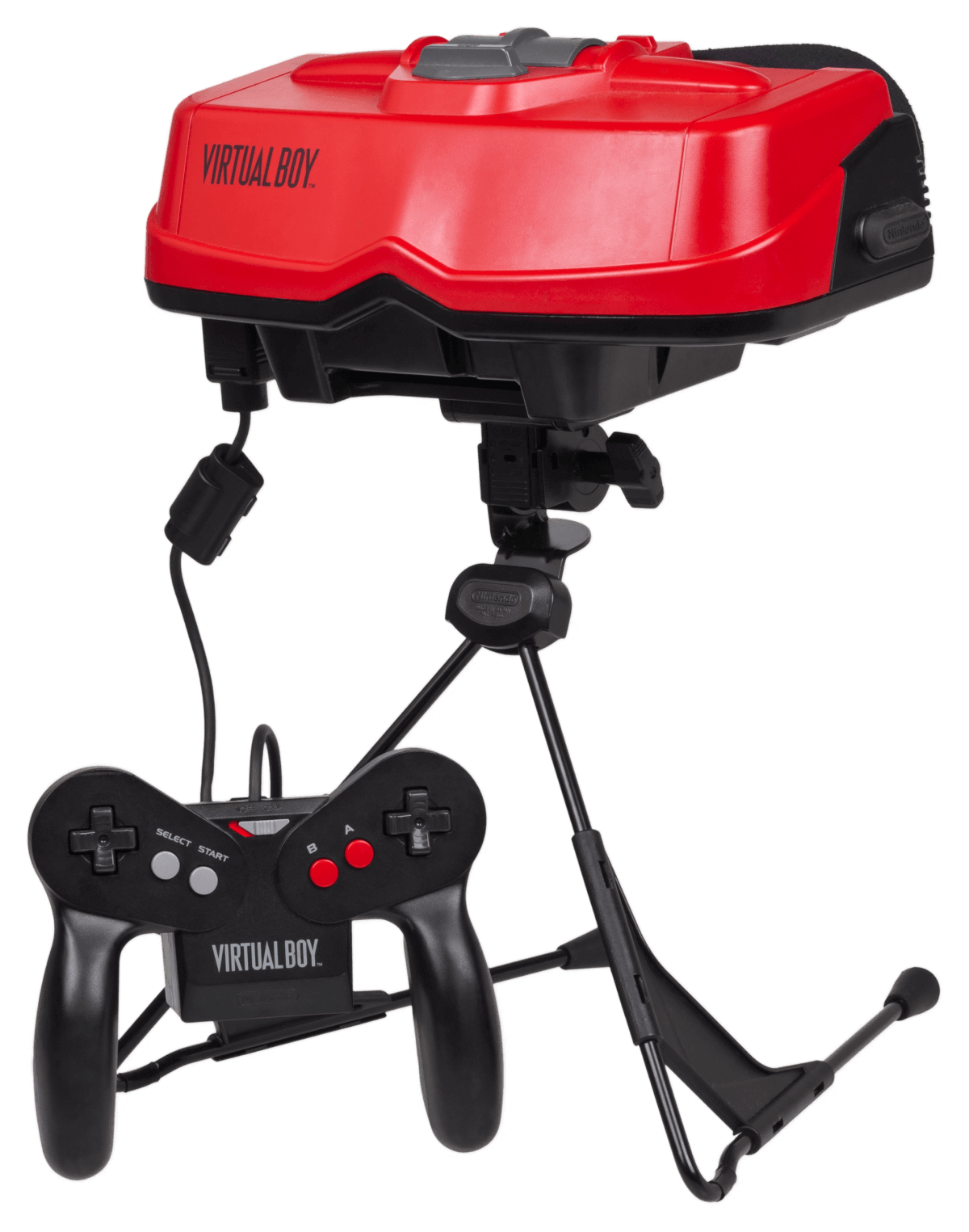
The Virtual Boy, released in 1995, is one of Nintendo’s most infamous hardware experiments. Marketed as the first portable console capable of 3D graphics, it was designed by Game Boy creator Gunpei Yokoi. The system used a pair of monochromatic red LED displays and oscillating mirrors to create a stereoscopic 3D effect when viewed through a binocular-style headset. While technically innovative for its time, the Virtual Boy was bulky, uncomfortable, and failed to deliver the immersive experience its marketing promised. It was Nintendo’s first major commercial failure in the hardware space.
Criticism of the Virtual Boy stemmed from multiple factors: the system’s red-and-black color scheme caused eye strain and discomfort, the lack of head tracking or full-color visuals broke immersion, and its awkward tabletop design clashed with the idea of portability. Its game library was limited—only 22 titles were released worldwide, with just 14 making it to North America. Still, a few standout games like Mario’s Tennis, Wario Land, and Teleroboxer showed glimpses of creativity within the hardware’s limitations.
The Virtual Boy was discontinued less than a year after its launch, having sold only around 770,000 units worldwide, making it Nintendo’s lowest-selling console. Despite its failure, the Virtual Boy stands as an important step in Nintendo’s history of experimentation. Its bold attempt at 3D gaming would later influence more successful efforts like the Nintendo 3DS, and its legacy is often cited as a lesson in balancing innovation with user experience. Today, it remains a cult curiosity—both a collector’s item and a symbol of ambition gone awry.
Virtual Boy Technical Specifications
| Component | Specification |
|---|---|
| CPU | 32-bit NEC V810 @ 20 MHz |
| Graphics | Monochrome (red LED array), stereoscopic 3D visuals, 384×224 resolution |
| Display | Dual displays with oscillating mirrors (one per eye) |
| Sound | 16-bit stereo sound |
| Media | ROM Cartridges (up to 2MB, some with battery save) |
| Power | 6 AA batteries or AC adapter |
| Controls | Dual D-pads, A/B buttons, start/select, shoulder triggers |
| Release Date | 1995 (Japan and North America) |